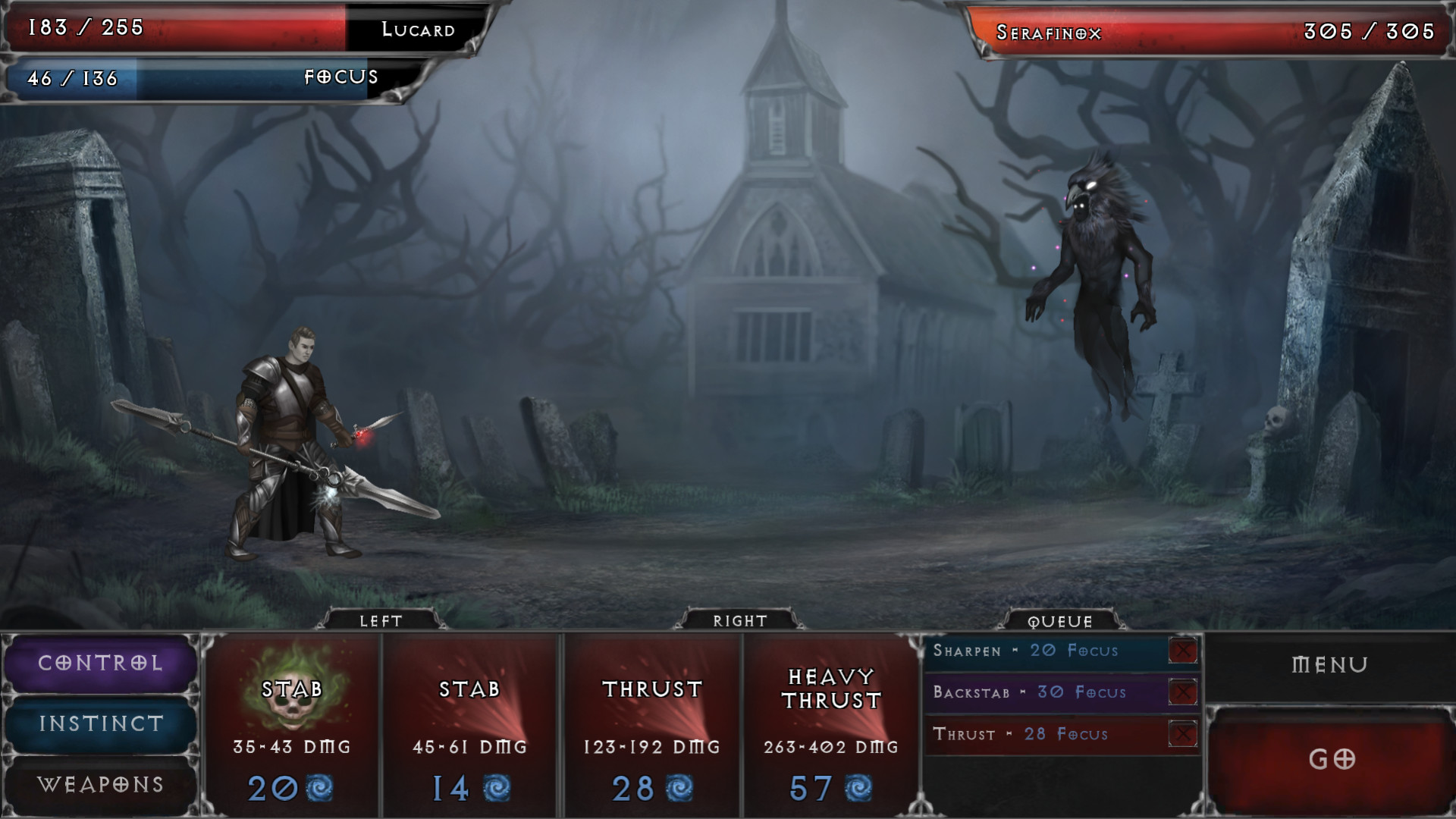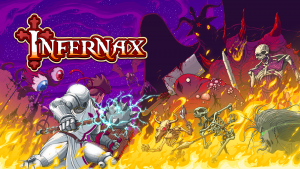
With rumours circulating of the fabled Witchmaster marching his army across the land, you volunteer your help to the militia of your sleepy village. Grabbing whatever equipment you can get ahold of, you aid the village in whatever meager way you can. Not long after you have killed your first basic threat, the Witchmaster’s army arrives on your doorstep, giving the village one chance to be spared, besting the Witchmaster in one on one combat. The village’s inhabitants throw you into the hopeless duel, but after being quickly dispatched, you awake to see the rest of the village butchered, your skin pale, teeth sharpened and your mind altered. Your only goal now is to find the Witchmaster and put a stop to his path of destruction.
Vampire’s Fall: Origins is described by the devs as a “A tribute to classic RPGs. Made with passion, by old-school gamers.” The world is an isometric landscape, and combat is a turn based affair that takes place in a separate 2D screen, which will be familiar to anyone who has played past Final Fantasy titles. Your combat abilities are split into three different types; Weapons, Control, and Instinct. Weapon attacks are based on what weapon you are using. A basic weapon attack uses no resources and will use its standard damage range value, or you can use a resource called Focus to attack with both your main hand and off hand weapon. Focus is a limited resource which you gain a certain amount of each round, depending on your character’s build. Control and Instinct attacks will always cost Focus, and allow you to use various buffs, debuffs and special attacks.
Every fourth round of combat will be a combo turn, giving you a larger amount of Focus and also allowing you to use multiple Focus abilities in a chain, even selecting from multiple attack types. During this turn, your weapons will switch to their combo attacks. Weapons with higher base damage may only have a single, high-cost combo attack, whereas a weapon with lower damage may have multiple combo attack options at lower costs, giving you more flexibility and opportunities to deal different damage types. The trick is to choose a combination of a main-hand and off-hand weapon that allows for good damage whilst also keeping your options open, whilst also having good management of your focus. Whilst the design of the combat is interesting, things do get repetitive, especially once you have found a formula that you feel works. Your character’s leveling options are also a bit lackluster. You can put points into three different trees, giving passive bonuses to things such as weapon damage, Focus regeneration or health points. You can also improve a Control or Instinct ability each level. With new abilities only being unlocked on rare occasions, leveling up results in slight stat buffs rather than exiting new options.
The world feels immersive and atmospheric. The forests are creepy, villages look like they have fallen on hard times, and the ambient music fits well, though there could be a bigger variety of visuals and sound effects. The biggest strength of the game’s world is the writing. The game often dosn’t take itself too seriously, with some genuinely funny lines weaved into the dialogue. It’s enough to add something to the game, but isn’t too frequent or poorly timed to ruin the immersion. The writers have thrown in a number of references and pseudo-fourth wall breaks which I thought were a nice touch. This style of writing also makes its way into the side quests, which helps give some variety to the content. There are the usual collection of fetch and kill quests that you would expect to see in an RPG, but some quests are designed to be funny distractions, or at least have amusing moments that make them worth completing. On the downside, there are a few too many quests with no waymarkers or vague objectives. Some of the kill quests rely on random world encounters, which is a very dated mechanic.
The story starts off with a good premise, but often feels like wasted potential. The issue is that the main quest has you moving around quite a lot, and there is a serious lack of compelling characters. Most NPCs will only have a single line of repeatable dialogue. Quest givers are more engaging, but even with the main quest line, I felt like I was moving from area to area meeting with forgettable NPCs.
Vampire’s Fall: Origins feels like a game where all the elements of an RPG are present, but in a functional sense rather than a truly engaging one. The combat mechanics are competent, but the character options are limited and the fights themselves fairly basic. The story and world have good foundations, but often fall a bit short. On the plus side, those with a soft spot for indie games may want to give this one a try, as the writing, references and humour make it feel like the devs have poured their love for games into their work, even if it sometimes disappoints. At a higher price point, the game would be lacking in too many areas, but considering it’s cheap price, there is enough here for an RPG fan to enjoy.
Score: 6.9/10







